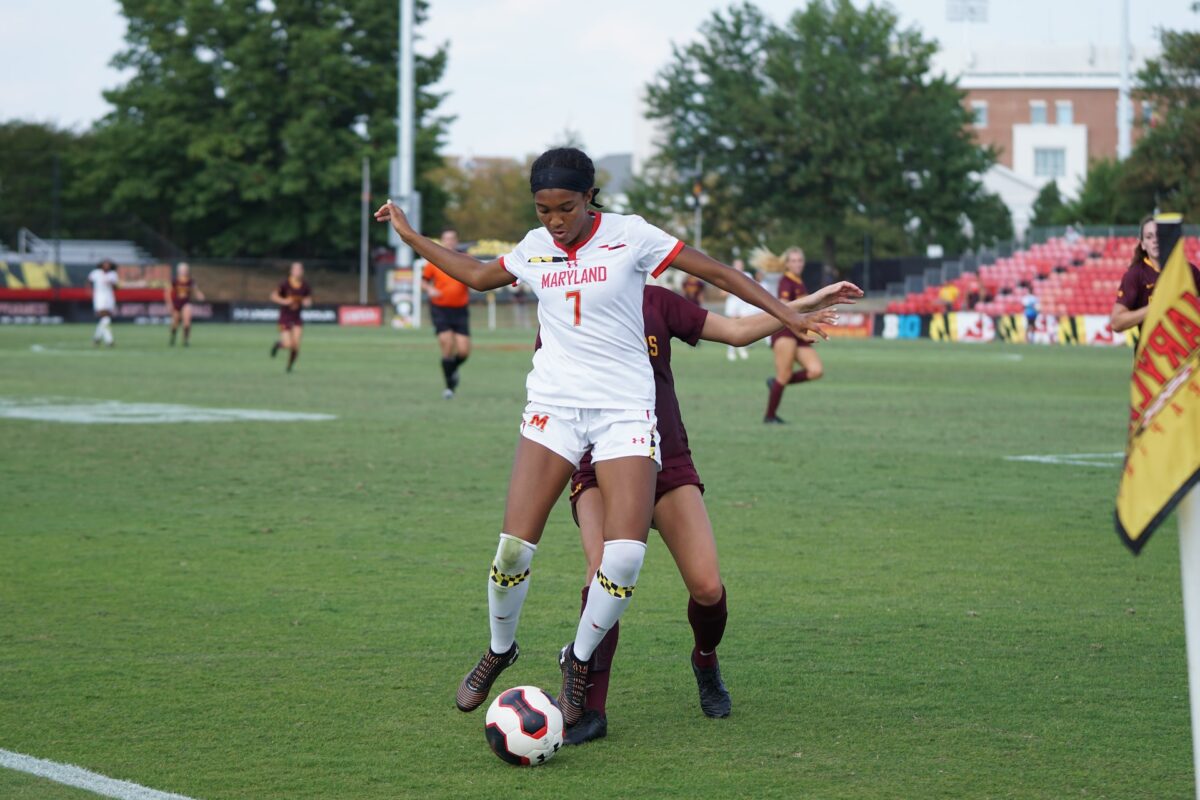Table of Contents
- What is an advanced forward in soccer?
- Why use an advanced forward?
- Advanced forward vs. pressing forward – what’s the difference?
- What attributes does an advanced forward need?
- Example of an advanced forward in soccer
- Recap: The role of the advanced forward in soccer
Using an advanced forward in soccer can be advantageous, but it depends on how you set your team up. Therefore, you need to think carefully about how you utilize your central forward to spearhead your attacks and bring other players into attacking moves.
So, with that in mind, we explain everything you need to know about the role of the advanced forward in soccer and show you how it’s different from other roles that you can adopt in the central striking position.
What is an advanced forward in soccer?
An advanced forward is a central striker that leads the line, looking to run in behind the defense to capitalize on goalscoring opportunities. Seen as the spearhead of a team’s attacking threat, an advanced forward needs to be quick, good at finishing, and adept at remaining onside.
Advanced forwards pose a significant goal threat and look to unsettle opposing defenders wherever possible, be it by running in behind or by making intelligent runs into wide areas. Let’s take a look at why you might use an advanced forward in soccer.
Why use an advanced forward?
Fundamentally, using an advanced forward in soccer helps your team get up the pitch. Rather than dropping deep, as is the case with deep-lying forwards, the advanced forward looks to stretch the opposing defenders wherever possible.
It’s typical to deploy an advanced forward as far possible as forward, with the forward looking to play on the shoulder of the central defenders. As a result, it helps if an advanced forward is strong and agile, but they also need to be quick enough to get in behind without getting caught offside.
When you utilize an advanced forward, you free up some space in the center of the field and help to stretch the opposing team. This means that your playmaker or trequartista can operate in attacking thirds without worrying about the central forward dropping deep and taking up their positions.
What’s more, advanced forwards are equally adept at running the channels, which sees them run in behind the full-back in an attempt to draw the central defenders out of their comfort zones.
This creates attacking opportunities for your team and means that the advanced forward is difficult for defenders to pick up.
Advanced forward vs. pressing forward – what’s the difference?
There are undoubtedly similarities between an advanced forward and a pressing forward. But the main difference is the emphasis on pressing. As the name suggests, a pressing forward is responsible for leading the press from the front, hunting down the goalkeeper and defenders as soon as they get the ball.
While an advanced forward might also be required to press, it’s not their main role. Rather, they look to run in behind wherever possible, stretching the play and turning the defenders in the process.
Something else worth noting is that you typically see a pressing forward deployed as the sole central striker. It’s more common to see teams use an advanced forward as part of an attacking duo, even though some advanced forwards also play up top alone.
Historically, many teams utilized an advanced forward alongside a target man with great success – think of Peter Crouch & Jermain Defoe, for instance!
Ultimately, both a pressing forward and an advanced forward can be effective roles to spearhead your team’s attacking opportunities, but they are slightly different from one another.
What attributes does an advanced forward need?
One of the most important attributes of an advanced forward is finishing. They are the player responsible for taking goalscoring opportunities when they arise, meaning that they need to be able to find the back of the net.
It also helps if advanced forwards are quick, so you should look at how pacy they are. The faster an advanced forward is, the easier it is for them to get in behind to turn the defenders.
Positioning is also key for advanced forwards, as they need to be able to use their discretion to stretch the play and get in behind the defense wherever possible.
Example of an advanced forward in soccer
In the English Premier League, one of the best examples of an advanced forward is Aston Villa’s Ollie Watkins. The Englishman is a thorn in the side of defenders as he spearheads Villa’s attacks, and he runs in behind and down the channels brilliantly.
Although he struggled to adapt to the pace of the Premier League early in his career, he has become one of the most competent finishers in England in recent times and is knocking on the door of the England national team.
Newcastle United’s Callum Wilson is also another good example of an advanced forward, leading the line for Eddie Howe’s team while not giving defenders a minute’s peace. He’s also a brilliant finisher, providing an excellent return for his team year after year.
If you’re keen to utilize the role of the advanced forward in your system, check out the movement that helps Wilson score so many brilliant goals in this video clip.
Recap: The role of the advanced forward in soccer
Though there are lots of different ways to play with a central striker in soccer, deploying an advanced forward is a great way to set your team up.
The advanced forward poses a significant attacking threat to the opposition’s back line, stretching the game and helping your team get in behind for goalscoring opportunities.
Ultimately, you can effectively use an advanced forward in various tactical setups, ensuring that your team scores as many goals as possible.

